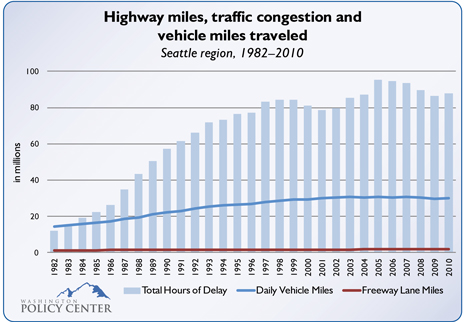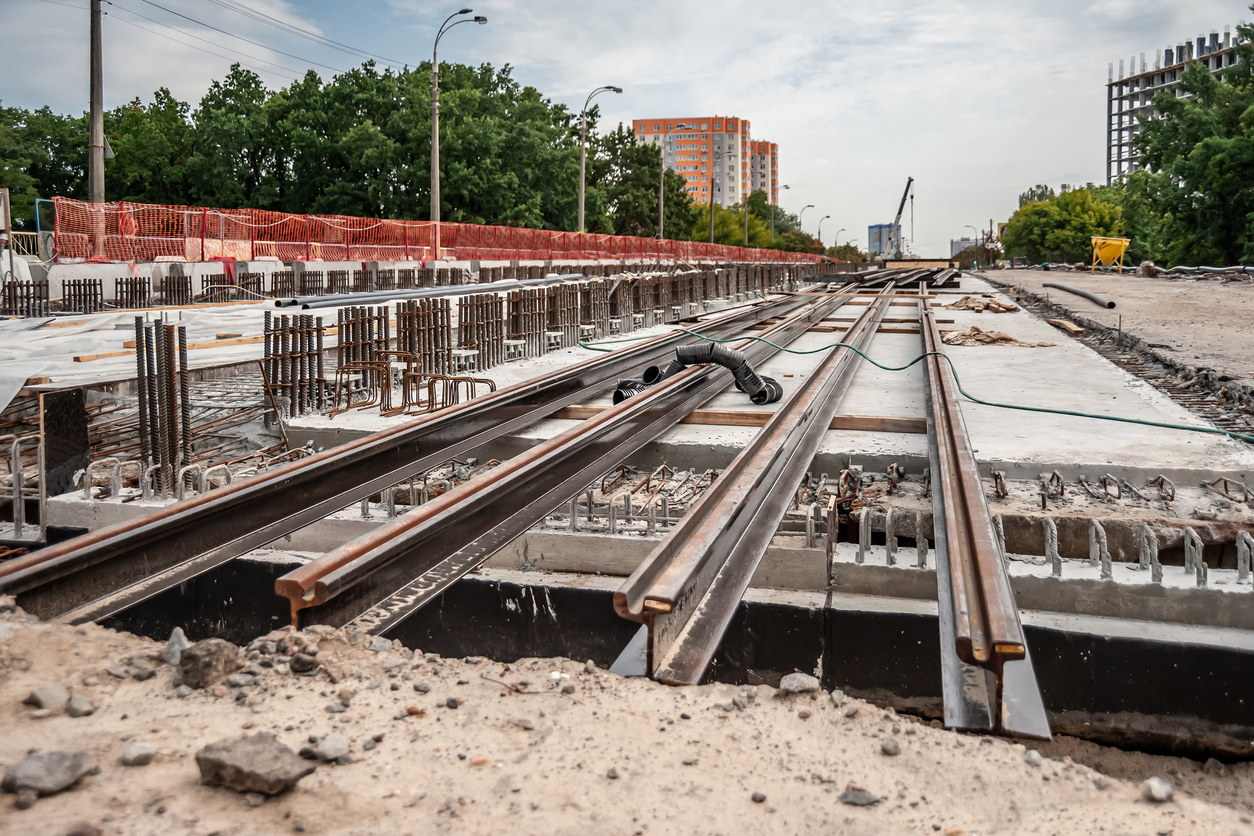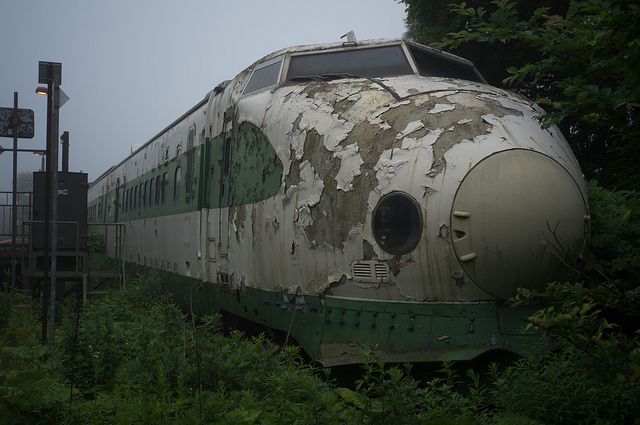WPC's Recommendations on the State's 2012 Transportation Tax Package, Part IV
This is part four of a five-part series of Legislative Memos that Washington Policy Center offers for lawmakers to consider before preparing a statewide transportation tax increase in 2012. The five recommendations are:
- Taxes and fees paid by drivers should not subsidize other modes of transportation.
- Do not create a state-level tax or fee to fund local transit agencies — public transit is not underfunded.
- Stop diverting existing transportation taxes and fees to pay for non-highway purposes.
- Expand capacity, fix chokepoints and do not restrict new resources to just maintaining the existing system.
- Reduce unnatural cost drivers that make transportation projects more expensive.
Part IV: Expand Capacity, Fix Chokepoints and Do Not Restrict New Resources to Just Maintaining the Existing System
In 2003 and 2005, lawmakers passed two gas tax increases to fund more than 400 road projects across the state. Each proposal was tied to specific projects and taxpayers knew exactly what they were supposed to get. This time around however, lawmakers have only identified broad funding categories, with the stated intent of using the new revenue to preserve the existing system. This means drivers would have to pay higher transportation taxes and fees without receiving any new road capacity.
If lawmakers are going to raise taxes and fees on drivers and spend political capital to pass a transportation funding package, they should identify specific projects that fix chokepoints, expand capacity and ultimately reduce traffic congestion.
The chart following compares the number of highway lanes, person delay and highway-vehicle miles traveled in the Seattle region between 1982 and 2010.

In 1982, drivers traveled about 14.6 million miles per day on highways in the Seattle region. By 2010, the amount of driving doubled to about 29.9 million miles per day on highways in the Seattle region. Yet while the amount of travel demand on the regional highway system has doubled in the last 30 years, the amount of freeway capacity has not.
The Seattle region had 1,345 miles of freeway lanes in 1982. In 2010, the region had 1,874 miles. This means that since 1982, regional highway demand increased by 106% while the supply of regional highway lanes only increased by 39% over the same time period. As the demand for highway travel grows faster than the supply of highway lanes, drivers experience increased traffic congestion.
Across the Seattle region, total hours of delay are six times higher today, rising from 11.9 million hours in 1982 to 87.9 million hours in 2010.
Transportation leaders rely on drivers to fund most of the state’s transportation budget and all of the state’s highway system. In fact, drivers are now being forced to subsidize local transit agencies across Washington, despite a growing list of unmet road and bridge infrastructure needs.
But with anti-car policies that mandate reduced driving targets, increased driving taxes and fees and replacing valuable auto lanes with transit and bicycle-only restrictions, drivers are paying more and receiving less.
The plan to replace the SR-520 floating bridge does not add any new general purpose lanes to the already-congested configuration that exists today. The deep bore tunnel that will replace the Alaskan Way Viaduct actually reduces the number of existing automobile lanes from six to four, which guarantees more traffic snarls in Seattle and on Interstate 5. Sound Transit officials also plan to remove the reversible center lanes of the Lake Washington I-90 floating bridge, which a Washington State Department of Transportation study shows will increase traffic congestion.
This means officials plan to reduce the supply of unrestricted highway lanes around Seattle in the next 20 years despite population estimates that show an increase of more than one million new residents.
If drivers are going to pay more in higher transportation taxes and fees, it should be in exchange for projects that not only maintain the current system, but that also reduce traffic congestion.
Michael Ennis is the transportation director at Washington Policy Center, a non-partisan independent policy research organization in Washington state. Nothing here should be construed as an attempt to aid or hinder the passage of any legislation before any legislative body. For more information, visit washingtonpolicy.org.
Download a PDF of this Legislative Memo here.





